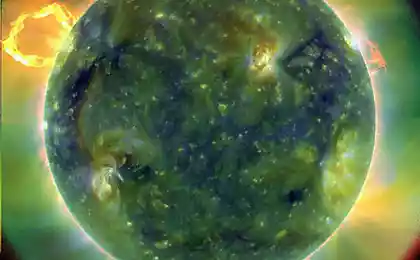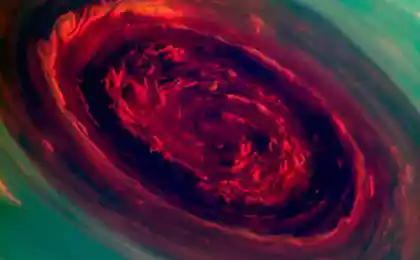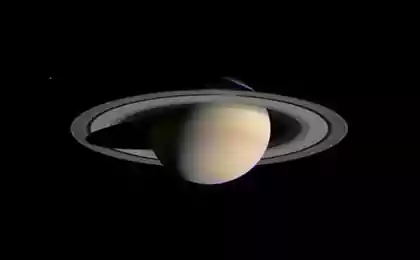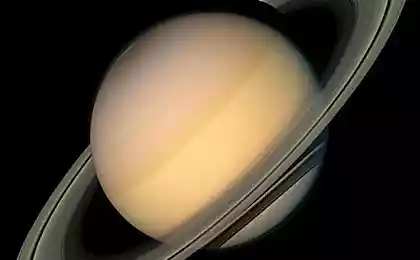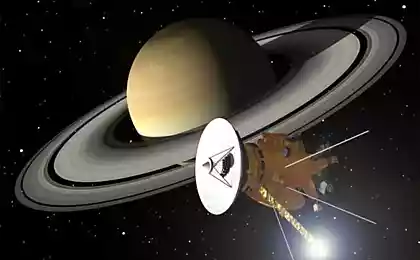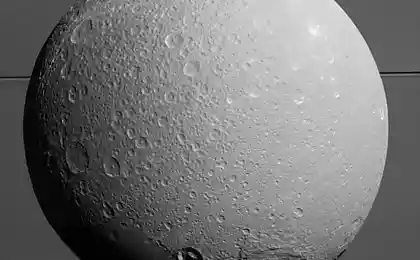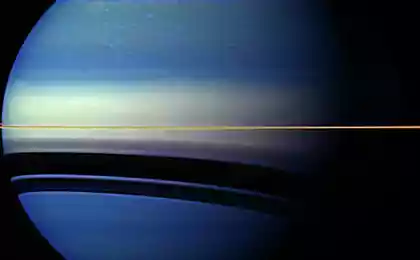718
Cassini captured Saturn's three on one photo
On the new photos Cassini spacecraft can be seen at once three satellites. At first glance, the two of them: we see Enceladus and Rhea, but if you look closely at the photo there is Atlas - its diameter is only 30 kilometers in diameter, which is 50 times smaller than Rhea on the bottom of the image.
95,859,686
Over the ring in the picture we see Enceladus, the sixth largest moon of Saturn, opened in 1789. In 2014, scientists using the calculations of the gravitational field of Enceladus determined that under its surface in the southern hemisphere is ocean , and it can be inhabited .
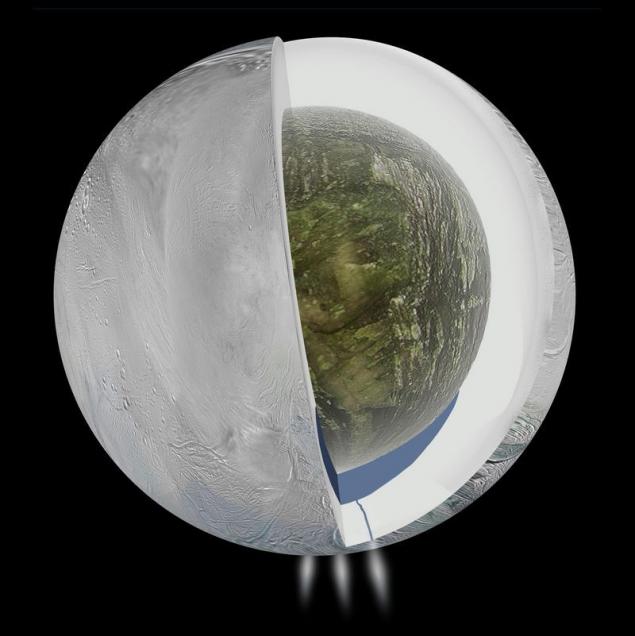
So Enceladus might look like in the context of i>
In the photo at Saturn's rings seen Rhea, the second largest moon of Saturn . It was opened in 1672 by Giovanni Cassini, after whom was named a research unit Cassini. The modern name of the satellite offered John Herschel in 1847, he put forward the idea to name the seven satellites of Saturn known by the names of the Titans. Prior to that, Ray called a "fifth moon of Saturn."
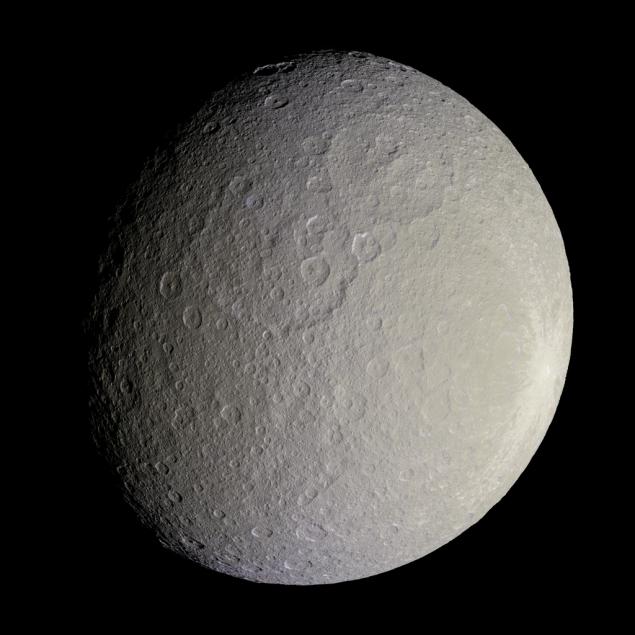
Ray i>
In this picture, except Enceladus and Rhea can see Atlas, known as Saturn XV. This helped to detect the satellite spacecraft "Voyager 1". The pictures from the unit Richard J.. Terra satellite found October 12, 1980. The diameter of the Atlas is only 32 kilometers. Look closely at the photo: Atlas visible on the left of Rhea, just above the ring F. If you find it difficult to see it, here's a hint . I could not find Atlas, until I read description photos.
14,443,359
Cassini transmits images from the area of Saturn since 1997, this unit has allowed to determine the nature of the planet's rings and satellites to study it. The new photo is made by a narrow-angle camera on Sept. 24, 2015 from a distance of 2, 8 million kilometers of Rhea. In the photo we see Ray on a scale of 16 kilometers per pixel. Distance to Enceladus - 2, 1 million kilometers, the scale - 8 kilometers per pixel. Before Atlas - 2, 4 million kilometers, the scale - 14 kilometers per pixel.
Source: geektimes.ru/post/268762/
95,859,686
Over the ring in the picture we see Enceladus, the sixth largest moon of Saturn, opened in 1789. In 2014, scientists using the calculations of the gravitational field of Enceladus determined that under its surface in the southern hemisphere is ocean , and it can be inhabited .

So Enceladus might look like in the context of i>
In the photo at Saturn's rings seen Rhea, the second largest moon of Saturn . It was opened in 1672 by Giovanni Cassini, after whom was named a research unit Cassini. The modern name of the satellite offered John Herschel in 1847, he put forward the idea to name the seven satellites of Saturn known by the names of the Titans. Prior to that, Ray called a "fifth moon of Saturn."

Ray i>
In this picture, except Enceladus and Rhea can see Atlas, known as Saturn XV. This helped to detect the satellite spacecraft "Voyager 1". The pictures from the unit Richard J.. Terra satellite found October 12, 1980. The diameter of the Atlas is only 32 kilometers. Look closely at the photo: Atlas visible on the left of Rhea, just above the ring F. If you find it difficult to see it, here's a hint . I could not find Atlas, until I read description photos.
14,443,359
Cassini transmits images from the area of Saturn since 1997, this unit has allowed to determine the nature of the planet's rings and satellites to study it. The new photo is made by a narrow-angle camera on Sept. 24, 2015 from a distance of 2, 8 million kilometers of Rhea. In the photo we see Ray on a scale of 16 kilometers per pixel. Distance to Enceladus - 2, 1 million kilometers, the scale - 8 kilometers per pixel. Before Atlas - 2, 4 million kilometers, the scale - 14 kilometers per pixel.
Source: geektimes.ru/post/268762/

